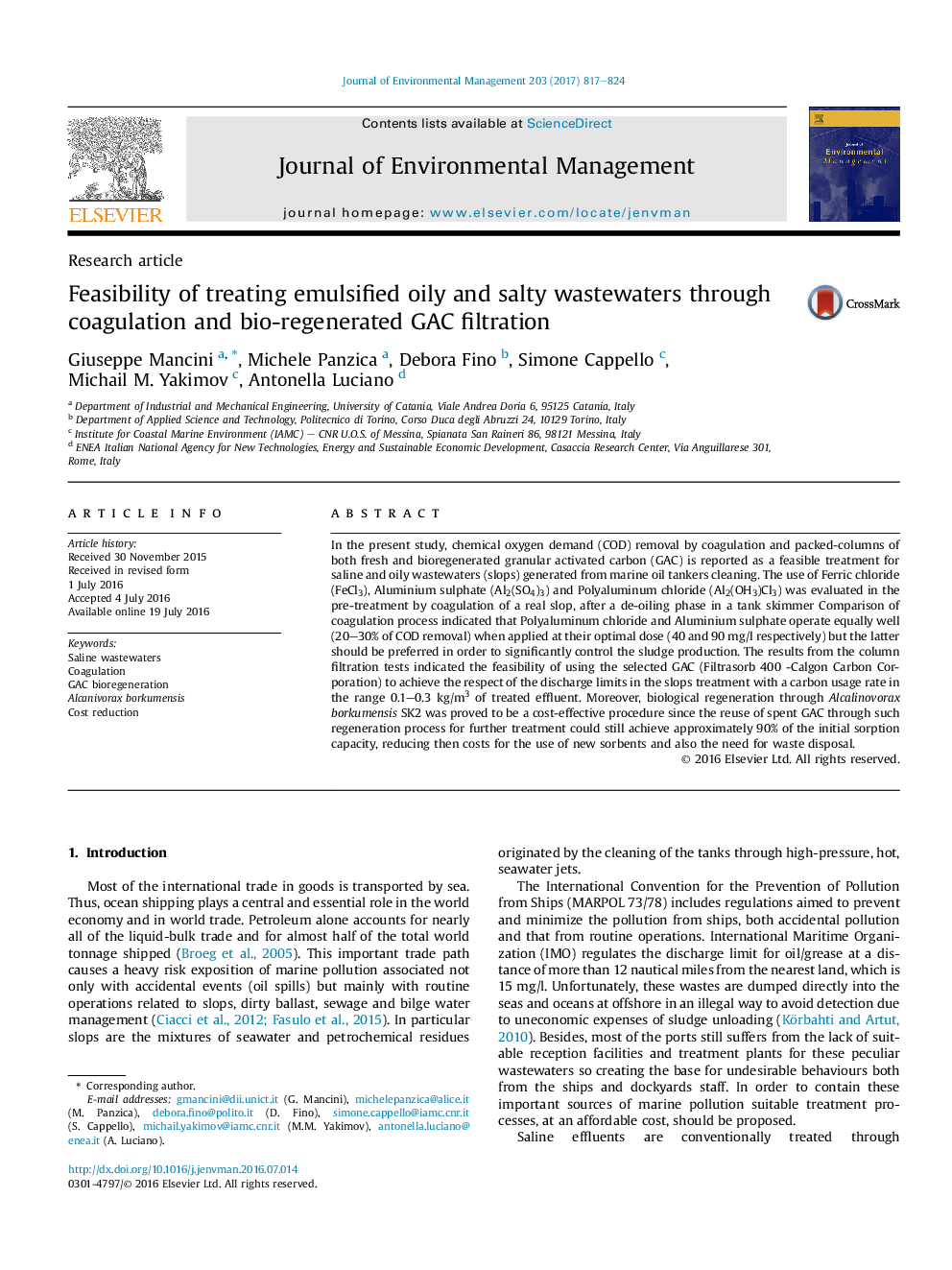| Article ID | Journal | Published Year | Pages | File Type |
|---|---|---|---|---|
| 5116443 | Journal of Environmental Management | 2017 | 8 Pages |
â¢The treatment of a real salty wastewater from marine transportation was optimized.â¢Optimal coagulant dosages for sludge control in slop pre-treatment are provided.â¢90% of GAC capacity was recovered through bioregeneration by Alcanivorax borkumensis.â¢A cost reduction in the industrial treatment of slop is obtained.
In the present study, chemical oxygen demand (COD) removal by coagulation and packed-columns of both fresh and bioregenerated granular activated carbon (GAC) is reported as a feasible treatment for saline and oily wastewaters (slops) generated from marine oil tankers cleaning. The use of Ferric chloride (FeCl3), Aluminium sulphate (Al2(SO4)3) and Polyaluminum chloride (Al2(OH3)Cl3) was evaluated in the pre-treatment by coagulation of a real slop, after a de-oiling phase in a tank skimmer Comparison of coagulation process indicated that Polyaluminum chloride and Aluminium sulphate operate equally well (20-30% of COD removal) when applied at their optimal dose (40 and 90Â mg/l respectively) but the latter should be preferred in order to significantly control the sludge production. The results from the column filtration tests indicated the feasibility of using the selected GAC (Filtrasorb 400 -Calgon Carbon Corporation) to achieve the respect of the discharge limits in the slops treatment with a carbon usage rate in the range 0.1-0.3Â kg/m3 of treated effluent. Moreover, biological regeneration through Alcalinovorax borkumensis SK2 was proved to be a cost-effective procedure since the reuse of spent GAC through such regeneration process for further treatment could still achieve approximately 90% of the initial sorption capacity, reducing then costs for the use of new sorbents and also the need for waste disposal.
